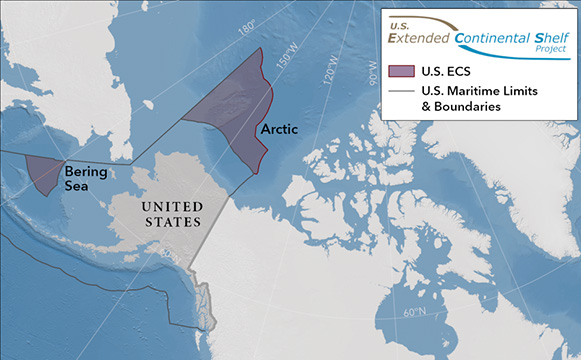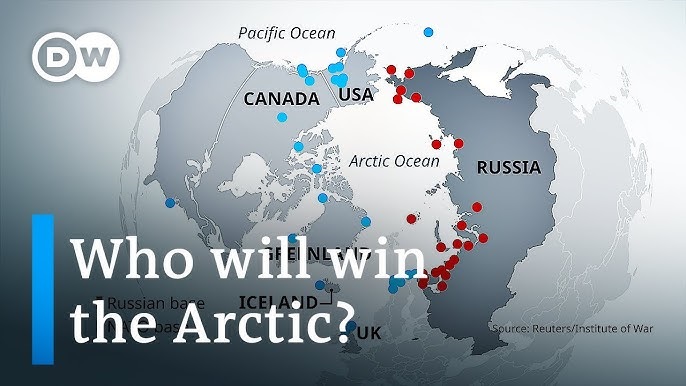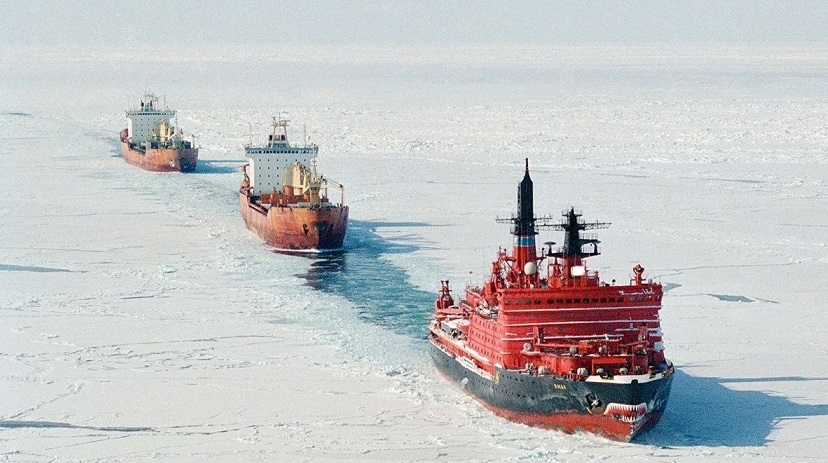
The U.S. Department of State announced plans to move forward with extended continental shelf claims in the Arctic (map). The US Department of State released the geographic coordinates defining the outer limits of the U.S. continental shelf in areas beyond 200 nautical miles from the coast, known as the extended continental shelf (ECS). The continental shelf is the extension of a country’s land territory under the sea.
Like other countries, the United States has rights under international law to conserve and manage the resources and vital habitats on and under its ECS, the Department states.
The U.S. ECS area is approximately one million square kilometers spread across seven regions. This maritime zone holds many resources, like strategic minerals and rare earth elements needed for everything from green energy to the semiconductors that drive Artificial Intelligence, as well as being a vital habitats for marine life like crabs and corals.
This is a monumental step, according to Arctic Research Professor Abbie Tingstad at the Center for Arctic Study and Policy, U.S. Coast Guard Academy. "Unfortunately, the significance of this step is muted by the implementation and credibility challenges the U.S. will face as a consequence of its continuing failure to ratify the UN Convention on the Law of the Sea (UNCLOS), in which the process for arbitrating ECS claims is laid out, among many other areas of important maritime governance", says Tingstad.
UNCLOS has been ratified by 168 states and the European Union.
U.S. neighbors Canada and Russia, and other Arctic nations have made ECS claims in the high north through UNCLOS. Numerous states including France (closely behind the U.S. in EEZ size) and China have submitted claims to the UN to extend continental shelves around their EEZs as well.
"Although the U.S. abides by UNCLOS in practice, not formally ratifying it has raised questions about the extent to which the nation can or cannot formally make ECS claims or dispute those of others", Tingstad says.
By making substantial investments in Arctic platforms, equipment, infrastructure, and training, U.S. military forces will be better able to shape the Arctic security environment.

The U.S. needs to better secure its Arctic territories and waters, while working more with its allies to better secure theirs. Although the Arctic has been relatively peaceful since the end of the Cold War — a recurring mantra has been “high latitude, low tensions” — U.S. military forces need to be prepared for unexpected conflicts that can erupt quickly, like Putin’s full-scale invasion of Ukraine and Hamas’ devastating attack on Israel, notes ‘The National Interest’.
The U.S. military’s ability to operate effectively in the Arctic is impeded by various factors. As we described in a recent report, chief among these are the fact that it has so few assets that can operate in the region and so little infrastructure there, particularly in comparison with Russia. Increased investments in platforms, infrastructure, equipment, communications, multidomain awareness, and enhanced tactics and training would enable the U.S. to better secure its critical interests in the Arctic.
The importance of the region to overall U.S. interests is highlighted in the Implementation Plan for the National Strategy for the Arctic Region, released in October 2023, and in the 2022 National Security Strategy. It was also underscored by the U.S. Coast Guard’s publication of its Arctic Strategic Outlook Implementation Plan just a week ago. Although Coast Guard operations in the Arctic are particularly visible to civilians, the Army, Navy, Marines, Air Force, and Space Force also conduct training, exercises, and operations there.
Russia is building up its Arctic military and civilian capabilities. This included re-opening Arctic bases that had closed after the Cold War, conducting more extensive training and exercises, stationing more forces in the Arctic, and operating more throughout the region.
It also has over 50 polar icebreakers, far more than any other country. The U.S., by comparison, currently has two, though more are being acquired.
This is the power of the Russian icebreaker fleet in the Arctic:

China has also become increasingly involved in the region. Both of its polar icebreakers have been extensively collecting information on the Arctic’s physical environment. It has invested, or tried to invest, in Arctic properties from Greenland and Europe to Siberia, and has secured the diplomatic status of an observer at the Arctic Council. In an effort to achieve a greater role in the Arctic, China has alternately referred to itself as a “near-Arctic state” and to the Arctic as a shared environment belonging to all nations, neither of which is accurate. Beijing’s increasing collaboration with Moscow across all areas has also been deepening in the Arctic. The two countries have operated naval vessels together in the approaches to Alaska during the last few summers, and also recently signed a maritime law enforcement agreement that facilitates further Arctic collaboration.
For the U.S., Arctic-specific capabilities are needed because of the effect of the region’s unique environment on operations. Any system that was not specifically designed for that environment is likely to fail: fuels gel, materials shatter, lubricants freeze, and batteries do not work. The environment is even harder on people, who struggle to just to survive in extreme temperatures. Arctic operations are further impeded by the region’s tremendous internal distances and its remoteness from the rest of the world. Sparse infrastructure that is relentlessly battered by the elements, limited satellite coverage, and unique electromagnetic effects that degrade communications also contribute to challenges. Climate change is also degrading coastal infrastructure and contributing to less predictable conditions.
In addition, there is a need for more personnel to be trained to operate in Arctic conditions. Maintaining personnel in this environment and the resources needed to support them will also require sustained investments. Another good investment would be in enabling some future icebreakers to be homeported in New England, in addition to the current facilities that exist in Seattle. This would increase the responsiveness and on-station time for icebreakers addressing the eastern parts of the North American Arctic and the European Arctic.
…The race for the Arctic has begun. Russia has the best possible position. Will the US be able to achieve its goals with Ukraine and Israel on its hands?
read more in our Telegram-channel https://t.me/The_International_Affairs

 11:47 28.12.2023 •
11:47 28.12.2023 •






















